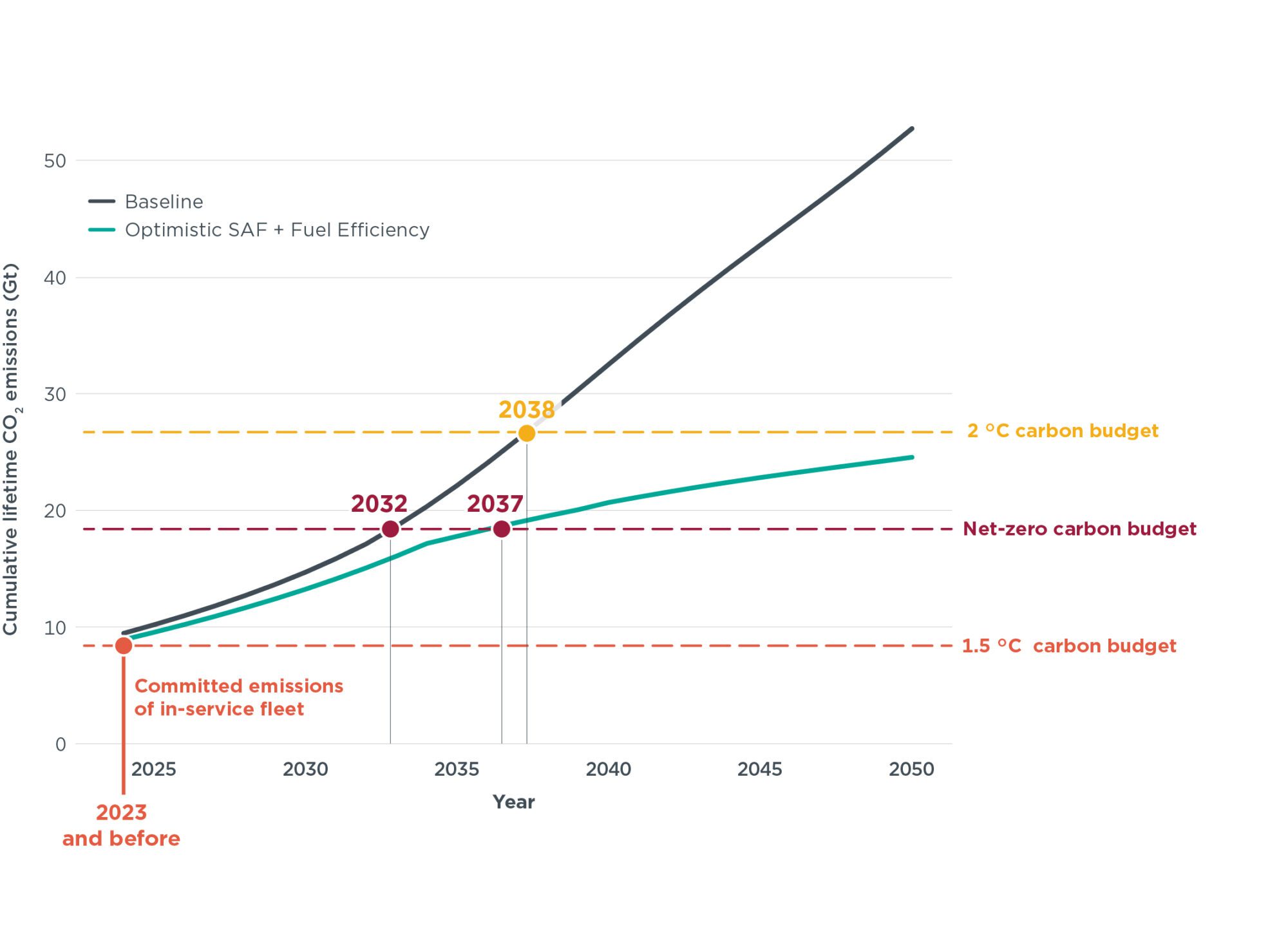Working Paper
Lifetime emissions from aircraft under a net-zero carbon budget
In 2022, airlines and aircraft manufacturers committed to an international goal of achieving net-zero carbon dioxide (CO2) emissions by 2050. Meanwhile, the commercial aviation sector is projected to grow rapidly in the coming decades, with an increase in traffic leading to the doubling of the current fleet size and usage of aircraft.
This paper assesses whether current manufacturer delivery projections are consistent with the 2050 net-zero target. Through modeling lifetime CO2 emissions from the 2023 global fleet and new aircraft deliveries through 2042 under three decarbonization scenarios – baseline, sustainable aviation fuels (SAFs), and optimistic SAF + Fuel Efficiency, the research concludes that the 2023 in-service fleet is projected to emit about 9 billion tonnes of CO2 before being retired, or almost half of a net-zero carbon budget. Lifetime emissions from new aircraft delivered from 2024 to 2042 are projected to exhaust the balance of a net-zero carbon budget between 2032 (Baseline scenario) and 2037 (Optimistic SAF + Fuel Efficiency scenario). This indicates that for airlines to achieve their climate goals, all new aircraft delivered by the mid-2030s will need to emit zero net CO2 emissions throughout their operational lifetimes. The research also concludes there will be a market for at least 10,000 new aircraft powered by hydrogen, electricity, or 100% SAF through 2042.
To reach the net-zero CO2 goal, aircraft manufacturers will need to dramatically increase their investments in lower emitting aircraft, notably zero emission planes (ZEPs). Manufacturers can:
- Accelerate efforts to develop narrowbody ZEPs, especially those powered by hydrogen, that emit no CO2 during operation.
- Ensure that all new aircraft can burn 100% SAF, not just SAF blends, starting in 2030.
- Establish aggressive “value-chain emissions” (those released during the lifetime of a product’s use by its customers) targets requiring that the aircraft they deliver will emit less CO2 throughout their lifetimes.
Figure. Consumption of aviation carbon budget from cumulative lifetime emissions of projected fleet

